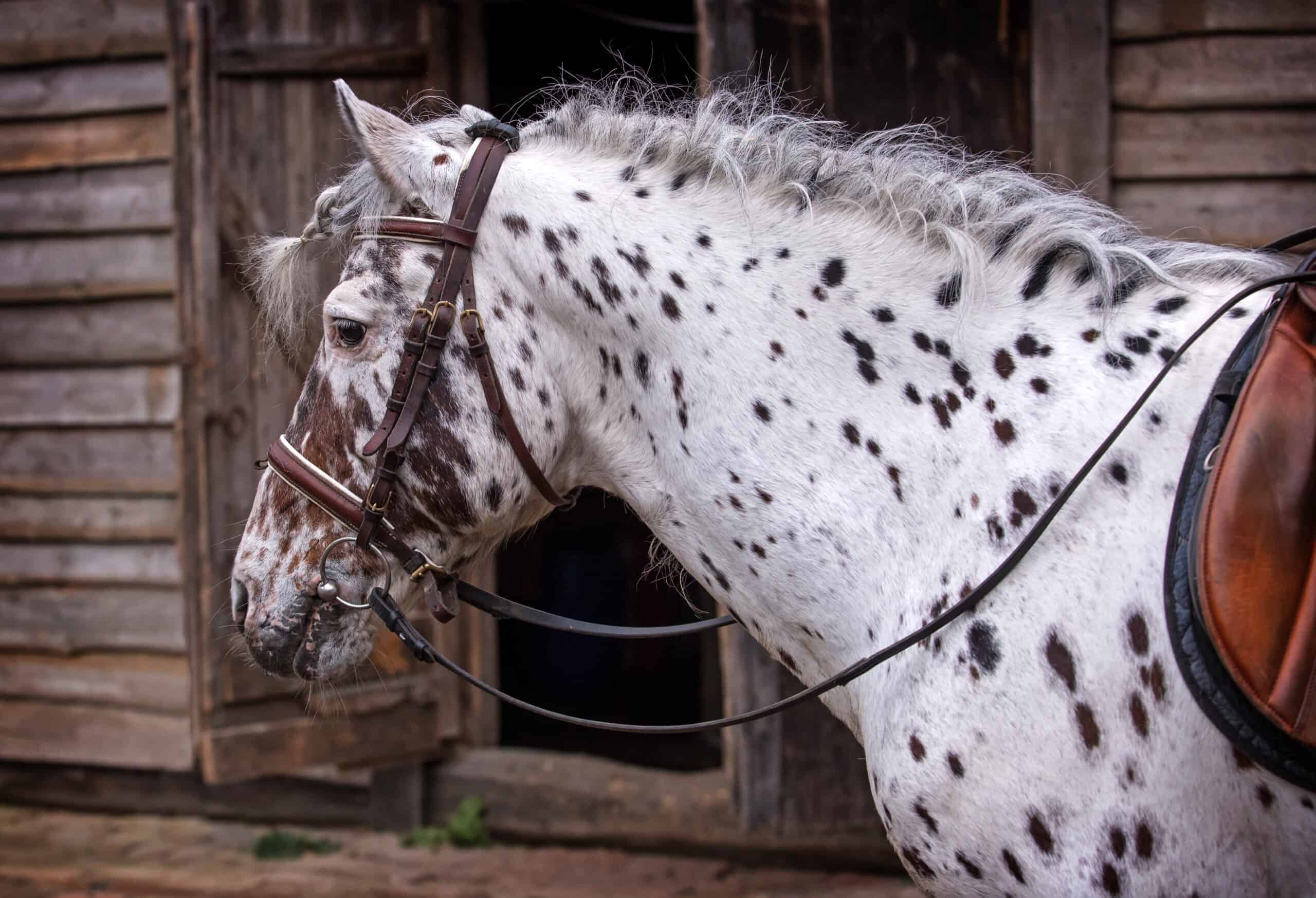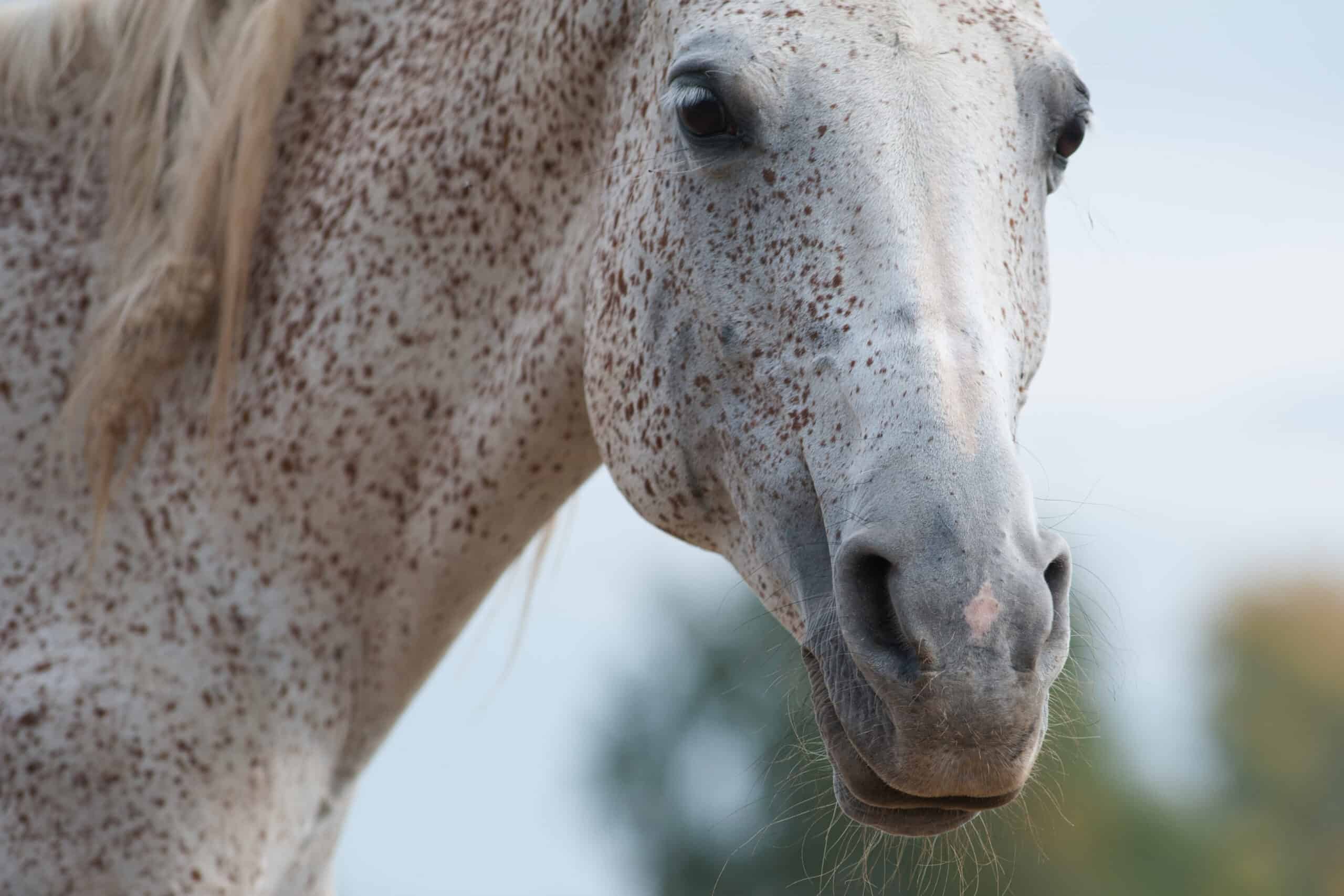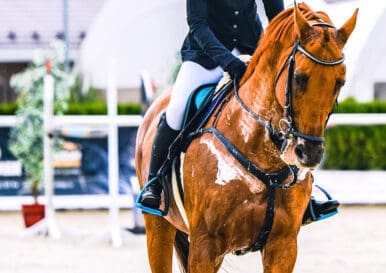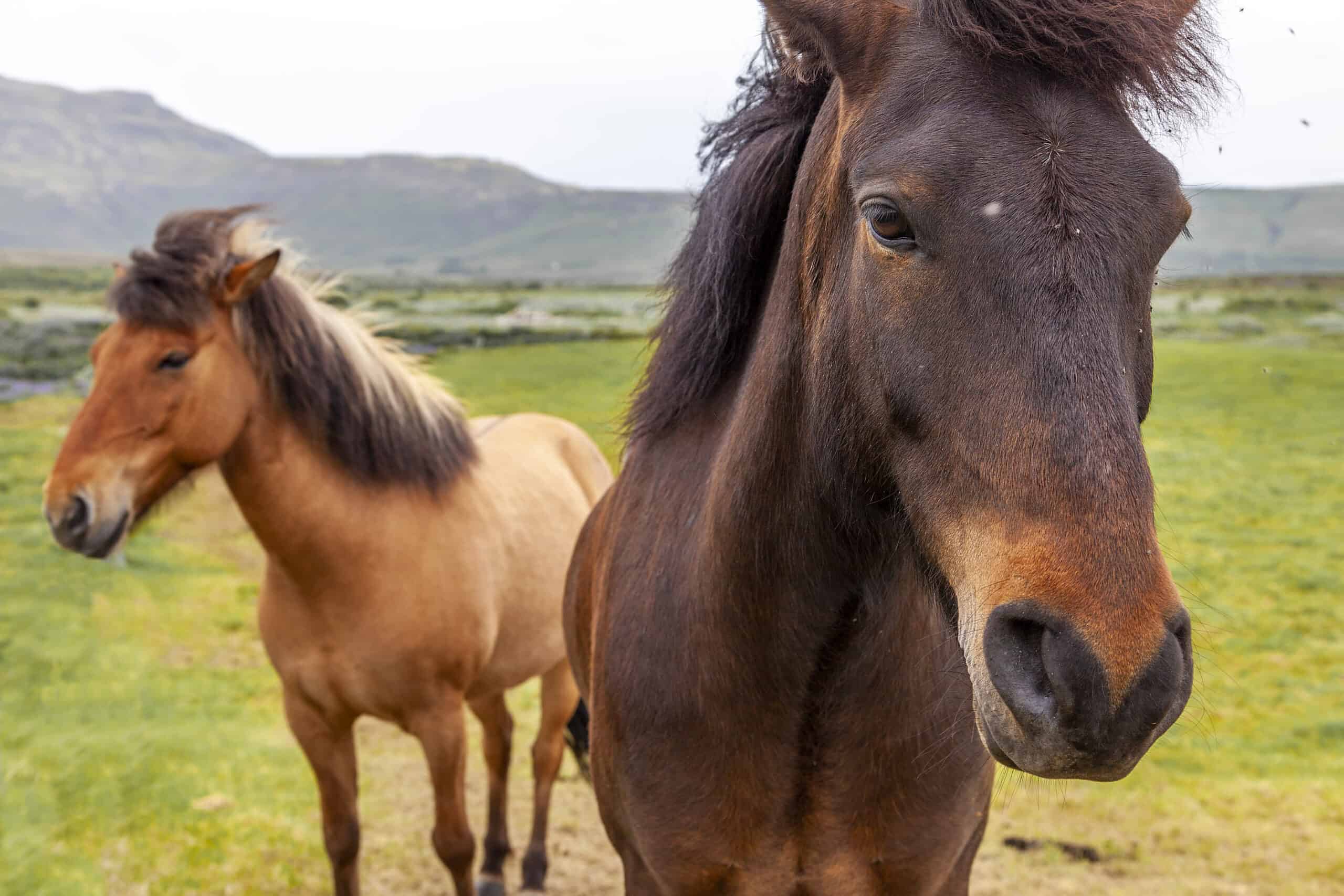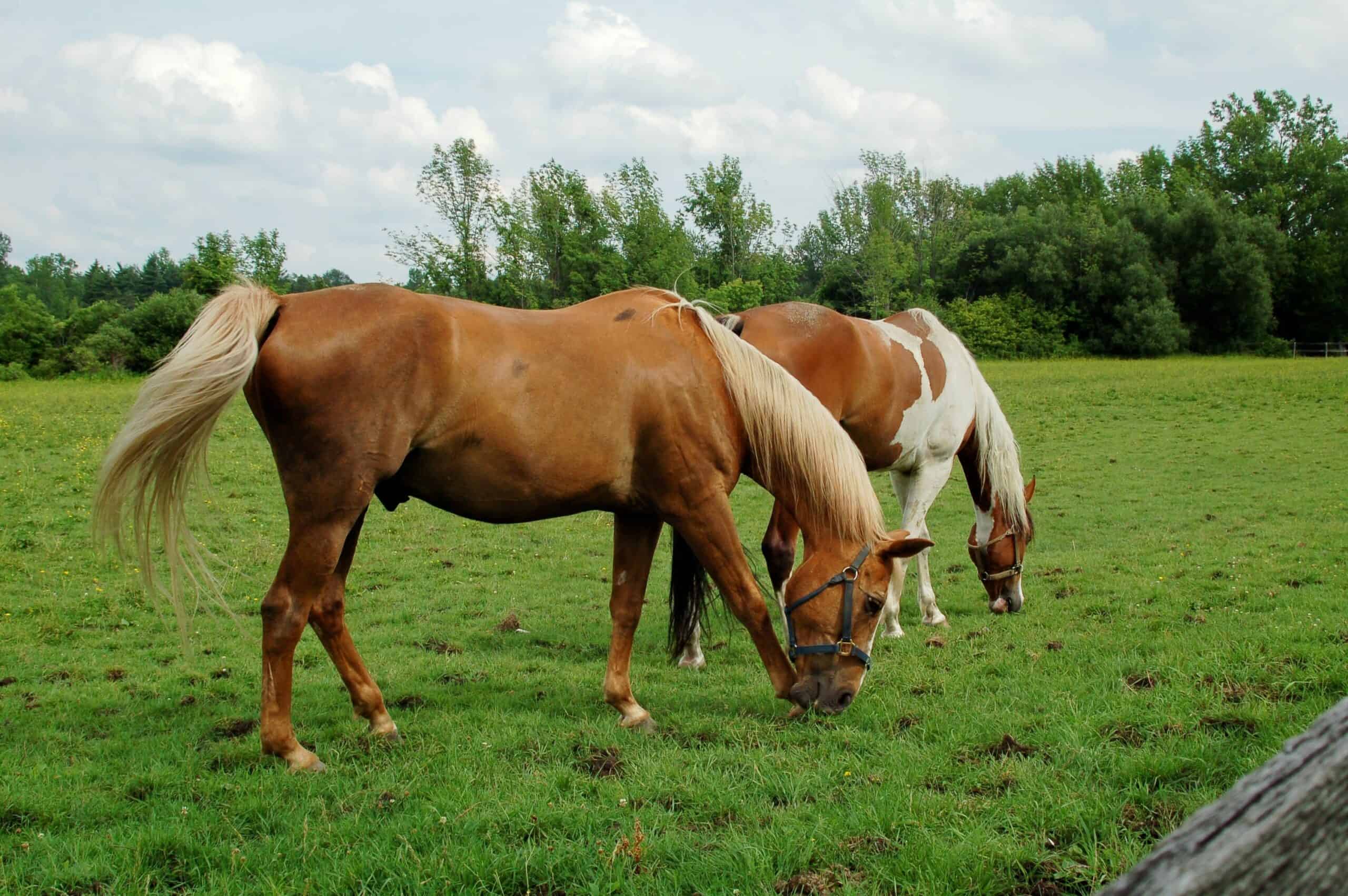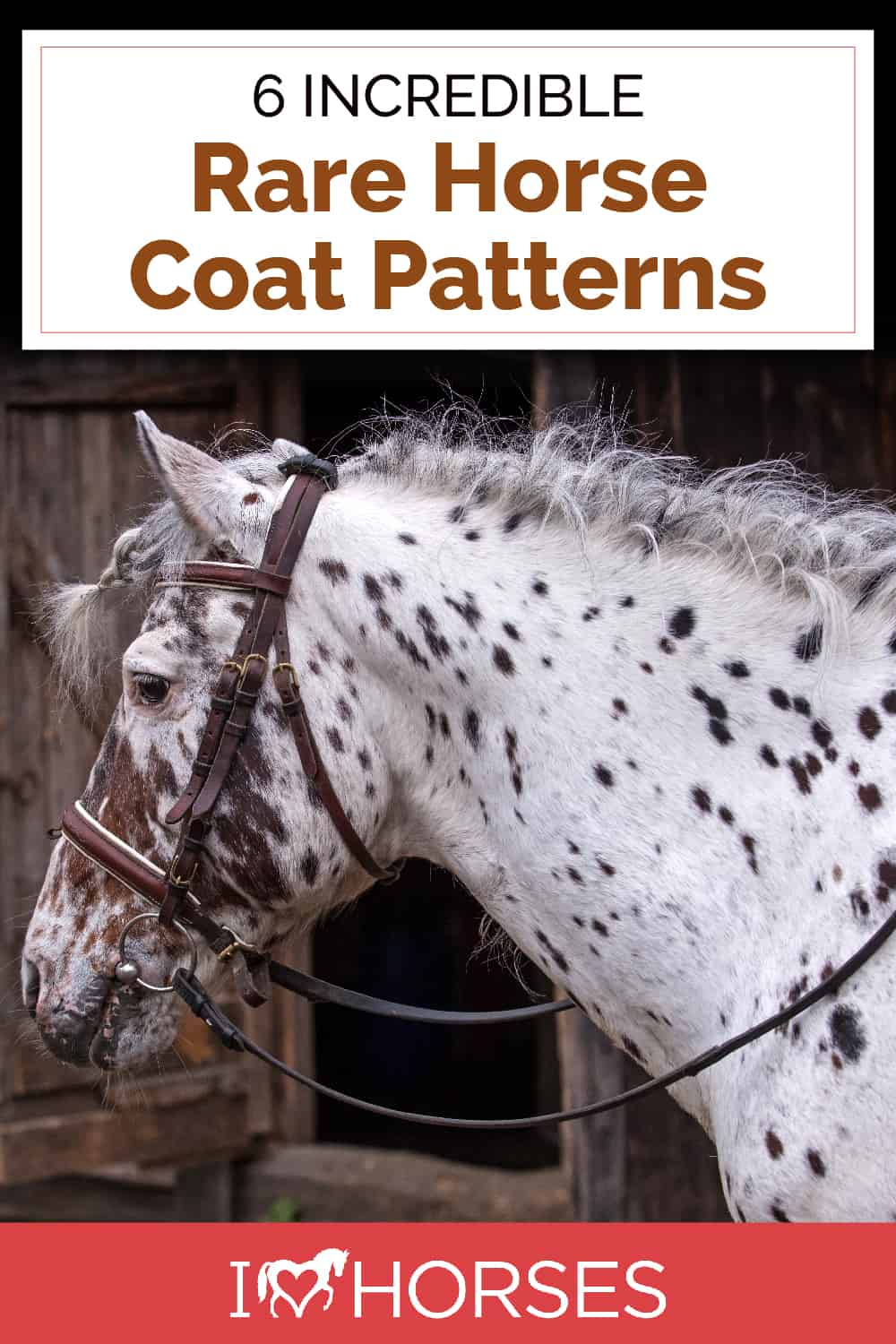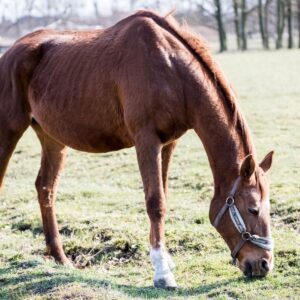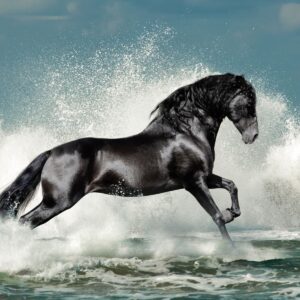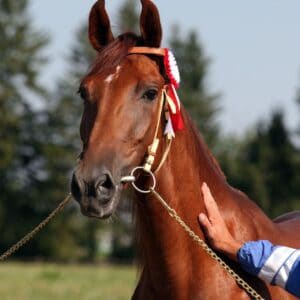We all know that no two horses are the same. Even your seemingly identical bays and sorrels are special in their own ways. There are, however, some horses that are unmistakably unique. They have markings that make it impossible to confuse them with another horse, and their rare coat patterns always make them stand out in the herd. Blazes, stars, and socks are relatively common, but there are a few rare horse coat markings that we definitely don't see every day.
Brindle
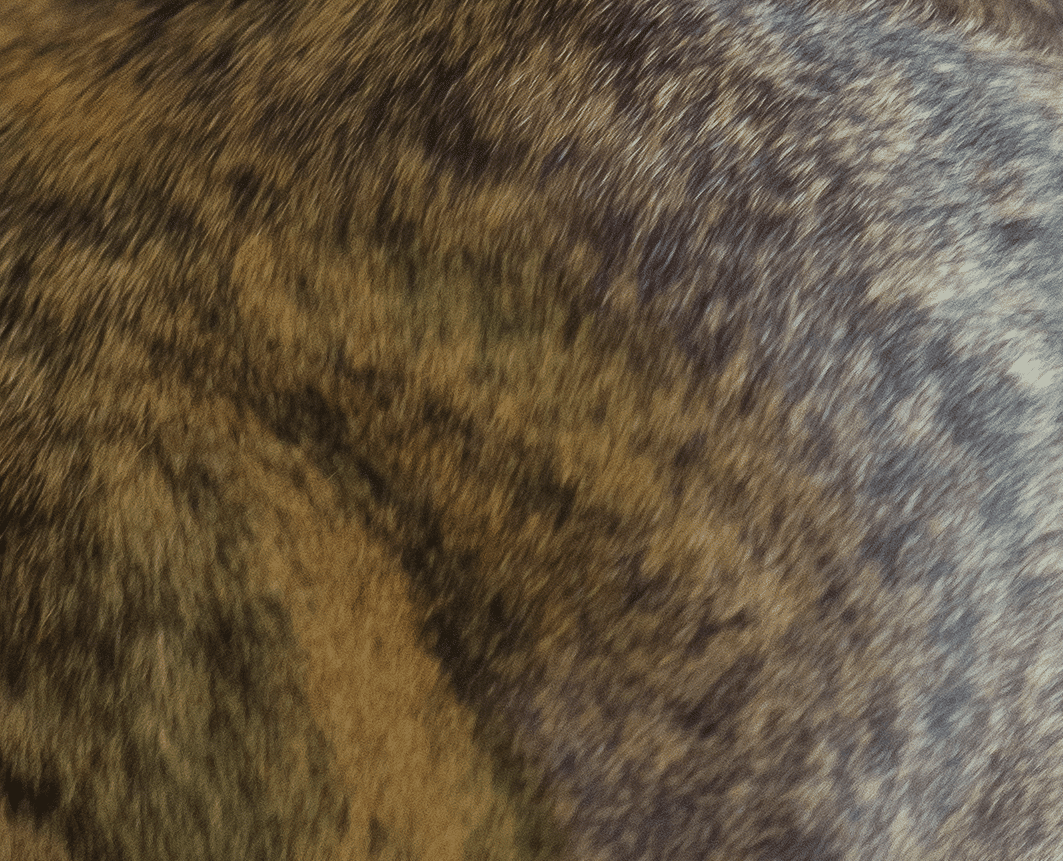
The brindle pattern is fairly common in dogs, but it's extremely rare in horses. According to Equine Tapestry, most brindle horses are conceived as fraternal twins that fuse early during embryonic development. As the fetus grows, pigments from the two individuals fuse to create a two-toned coat pattern.
The pattern is identified with uneven vertical stripes with two different colors. The contrasting colors make for a truly stunning horse. Because this rare coat pattern is a result of a genetic mistake, brindle horses cannot pass on their coloring to their offspring.
Ink Spots, Peacock Spots, Halo Spots
There are a few horse breeds famous for their spots, including the Appaloosa and Knabstrupper. People love these horses for their stunning good looks, but not all spots are the same. Most Appaloosas and Knabstruppers have solid-colored spots that make them look like the equine version of a Dalmatian. There are some, however, that have what are called ink spots, peacock spots, or halo spots.
You can tell the difference between the average spot and this rare type of coat marking by looking at the outer edge of each individual spot. Peacock spots are dark in the center and have a lighter ring around the outside.
Flea Bites
If a horse is described as "flea-bitten," it doesn't necessarily mean they're battling a plague of tiny blood-sucking parasites. "Flea bites" is also a term to describe a rare type of horse coat marking. Usually only seen in heterozygous Grays, the flea-bitten coat pattern consists of white hair with a smattering of small speckles.
Looking almost like freckles, the markings can be spread out or close together. Most gray horses that develop flea bites were completely white at one point in their lives.
Lacing, Cobwebbing, Giraffe Spots, Reverse Dapples
Also called reverse dappling, cobwebbing or giraffe spots, lacing is an interconnected white pattern that forms on a horse's back. It's even more rare for the lacing to be a darker color than the horse's coat—this is called shadow lacing.
There is some debate as to whether lacing is a rare genetic coat pattern or a type of scarring. Sometimes when horses heal from an injury, the scar will show up like a lace pattern. There are horses, however, that develop the pattern without any kind of injury, and it seems to be passed down between families as a recessive gene. If you don't know a horse's history, there is a possibility that their lacing could be due to an old injury, but it could also be a rare coat pattern that can change size and pattern as the horse ages.
Birdcatcher Spots
Similar to flea bites, birdcatcher spots are small white spots that usually show up later in a horse's life. Most spots are between dime and quarter size and don't seem to be linked to any particular breed. While they're rare, it seems any breed of horse can develop these small spots, and more can show up as the horse gets older.
At first glance, a birdcatcher spot looks like a speck of bird poop stuck to your horse's coat. That's not, however, how the marks got their name. Birdcatcher was the name of a Thoroughbred stallion that had these spots on his flanks. Not many horses have them, but they should not be confused with scars or other injuries. To make these rare horse coat markings even more mysterious, some horse owners claim birdcatcher spots can move with time.
Grease Stains or Bend-Or Spots
Named after a British racehorse, Bend Or spots are patches of dark hair that look like grease stains. The famous Bend Or was well-known for his wins as well as the motor oil-like spot on his side. Out of all the horses with this rare coat marking, most can claim Bend Or as an ancestor
Horse Courses by Elaine Heney
- Listening to the Horse - The Documentary by Elaine Heney & Grey Pony Films
- Shoulder In & Out Training for better balance, bend & topline development with your horse
- Over 110+ Polework Exercises & Challenges to Download
- Dancing at Liberty & Creating Connection with Your Horse (11 lessons) - Grey Pony Films
These grease stains are most likely to show up on bay or chestnut horses. It's also possible, however, for Palomino horses to either be born with or develop the smudges over time.

